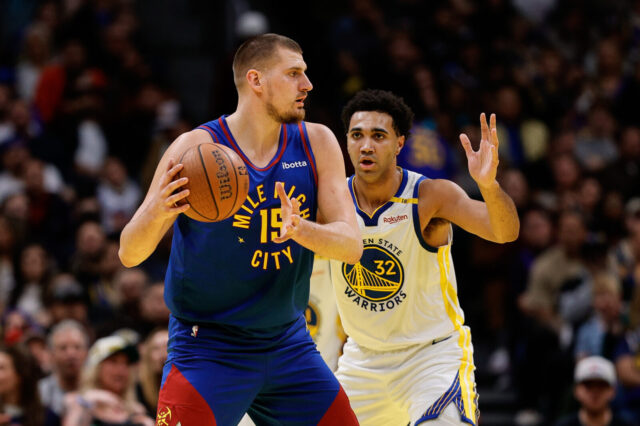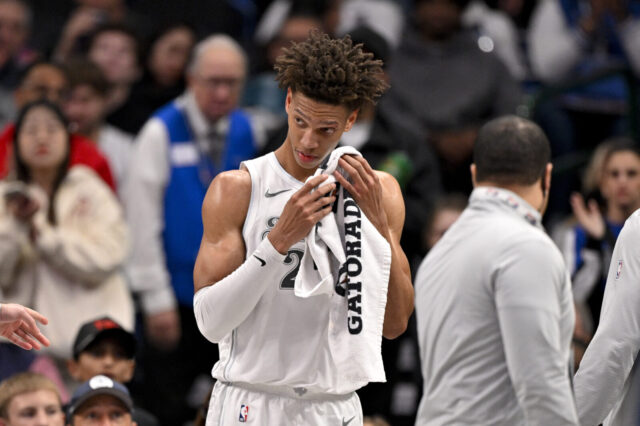Read part one right here before you proceed for the whole story.
****
“There seemed to be no consideration of the well-being of the Nuggets“
Favors for friends
Robert Wussler Jr. made his name known for being on the ground floor in the formation of CNN and co-founding the pioneering cable news station along with his long time friend Ted Turner. Prior to forming CNN, he was a producer and Network President for CBS News for 21 years. He even had a (brief) cameo in the movie Black Sunday. While at CNN Wussler also served in various capacities for Ted Turner’s sports teams as an executive (Atlanta Hawks, Atlanta Braves) and he did have some knowledge of sports leagues.
It was likely through a tip from Ted Turner that lead an increasingly desperate David Stern to Wussler at his new gig as CEO of Communications Satellite Video Enterprises (aka Comsat). The proposition?
Help save the deal that was announced in June featuring the first African American ownership in United States professional sports history. Sidney Shlenker had just publicly canceled the deal and Stern needed Comsat to prop up the ownership with much needed capital. The problem was Comsat was a satellite/video corporation that wanted to break into video (in particular satellite and video for hotel chains) and really didn’t have a need for a professional sports franchise.
It was up to Wussler to persuade Comsat shareholders that owning an NBA team would be worth the investment and worth "the trouble". Could he do it as a favor to a friend? That issue would be answered on October 22nd 1989, well into Nuggets preseason ….
While the Denver Nuggets were playing in the McDonalds Open in Rome, Italy, Comsat, Peter Bynoe and Bertram Lee announced that they had salvaged a deal with Sidney Shlenker. Comsat would invest $18 million of straight capital, Bynoe/Lee $8 million and the rest would be borrowed. All in all the partnership would pay Shlenker $54 million (11 million less than the initial deal) with the promise of the rest of the capital being made up to Shlenker from Comsat profits in Satellite or if the team was sold. In November the 26 other NBA owners approved the sale at Stern's insistence, just as the Nuggets season was getting underway.
Wussler, at the urging of David Stern, managed to convince Comsat shareholders that owning a sports franchise was in their best interest and to act as the big financial wheel in what was being advertised as the triumph of the Bynoe/Lee partnership. Indeed, it was a carefully crafted illusion. Comsat was to be the majority partner (67.5% shares), but Bynoe and Lee were slated to be managing partners even though they only controlled 32.5% of the team. An uneasy fit to be sure.
Upon sale completion there was little to no fanfare. No press conference in New York. It was an odd anti-climax to what could have and SHOULD have been a historic moment in professional sports history. While the Bynoe/Lee part of the ownership was propped up, everyone knew there was something wrong.
Regardless, after several false starts the Denver Nuggets had new ownership as they began what became the final season of the Doug Moe era. The hope was the the calamitous beginning wouldn't foretell a rocky ownership tenure. Unfortunately for Denver Nuggets fans, things would only get worse in the coming year.
"Competing agendas and egos"
Bynoe, Lee and Wussler generally left the Denver Nuggets alone during the 1989-90 season as plans were made for the future of the organization. Pete Babcock remained on as General Manager, but it was clear he was on borrowed time. As Doug Moe somehow coaxed 43 wins out of one of the oldest rosters in the NBA (winning 28 games at home).
Alex English was clearly on his last legs as an NBA player, and his scoring average dipped all the way to 17.9 a game. Fat Lever was productive (the best player on the team) but it was apparent he needed to be cashed in for future assets. Doug Moe knew it, and knew the roster needed much needed youth.
Pete Babcock left the Nuggets on Valentines Day 1990 in fact. Strangely enough though, Babcock had another job lined up the day he left the Nuggets, and spent the next 13 years with the Atlanta Hawks. Babcock saw the writing on the wall and maximized his own position because above him in the McNichols Arena executive suite all was not right with the world. The chaos of the Bynoe/Lee ownership genesis had yet to leave and there was serious acrimony brewing between the erstwhile partners.
Bynoe replaced Babcock with Legendary former Nuggets executive/owner Carl Scheer. However, strangely, Bynoe didn’t hire another general manager for another 5 whole months as it wasn’t entirely clear what or WHOM was wanted to replace Babcock as rumors of battles for control between Bynoe/Lee and the suddenly interested Comsat CEO Wussler began surfacing. As the Nuggets season ended after they were swept by the San Antonio Spurs in the first round of the 1990 playoffs and the time for hard decisions was approaching the Nuggets. Many of them were left for head coach Doug Moe.
A source told Denver Stiffs: "It was competing agendas and egos. It's amazing they managed to get through that first year. It was largely due to the respect that Doug Moe and Scheer had in the league that they didn't have egg on their face. The ownership group was assembled with little regard to running a franchise."
Toasting your own firing
The disconnect between Peter Bynoe, Bertram Lee and Robert Wussler was growing. There is no greater example of this than how they handled the hiring of Bernie Bickerstaff and the firing of Doug Moe. The ownership group fundamentally misunderstood how much Moe was beloved in Denver and the events that led up to Moe’s termination leave one scratching their head.
A giant void was left after former General Manager Pete Babcock left in February of 1990. While Carl Scheer stepped in to the team president role, it was clear that a General Manager was needed as Scheer had little interest in becoming a General Manager again (and the ever-deepening acrimony between the three owners was paralyzing the organization). So the long, drawn out, process of finding a GM ensued. Meanwhile, the machinations and every-day deals that are meant to keep an NBA team running were left to Carl Scheer and head coach Doug Moe. Including running the 1990 NBA Draft for the Nuggets.
In his last stand as Denver Nuggets coach, Moe helped pull off a trade that was part of his lasting legacy. Moe and Scheer sent Nuggets Legend Fat Lever to the Dallas Mavericks for two first round picks, the next day the Nuggets packaged those picks to the Miami Heat for the third pick in the draft. The Nuggets selected Chris Jackson (Mahmoud Abdul Rauf) from Louisiana State University and Marcus Liberty from the University of Illinois. A team that needed to get younger, just did … and with a high draft pick.
Which made the subsequent decision to let Doug Moe go all the more perplexing.
****
In July of 1990, Peter Bynoe hired Bernie Bickerstaff as General Manager in what would turn out to be one of his last major decisions as managing partner of the Denver Nuggets.
Bickerstaff had come from the Seattle Supersonics, and while he wasn’t an executive there until months before he quit … he was a coach with some personnel input. Bynoe believed that Bickerstaff was the perfect General Manager for the new decade of the 1990’s … but the hiring of Bickerstaff was done largely without the aid of then Team President Carl Scheer.
Upon being hired as GM, Bickerstaff said that he had zero issue with Doug Moe being coach, but did promise heavy personnel change as the Bynoe and Lee were tired of the mediocrity that mired the last two seasons (these personnel moves included letting Alex English leave in free agency, something that English never forgot and the organization very much regretted). The fact that they let Moe conduct the draft before Bickerstaff was hired was a strange move in hindsight.
On September 6th of 1990, Doug Moe held a press conference. He came out in a Hawaiian Shirt and a bottle of champagne, with his wife Big Jane by his side and announced to the press, by himself, that he had been fired as Denver Nuggets head coach. It was a surreal scene compounded by the fact that it was less than a month before training camp started. In addition to letting Moe conduct the 1990 NBA Draft, it wasn't really clear whom was pushing to move him out the door at the time. No Nuggets management appeared at Moe's press conference so questions couldn't be asked. This belied the behind the scenes chaos and backbiting going on inside the McNichols Arena executive suite.
It's said that Rober Wussler didn't like Moe, and made no bones about it. It wasn't clear what Bynoe and Lee thought of the coach, and Bickerstaff had already said he had no issue with Moe. A serious falling out between Wussler and Peter Bynoe was ongoing as the majority partner, Wussler, began exerting control over the Nuggets operations with Bynoe pushing back. Bynoe and Lee also began feuding, as the latter kept missing calls for additional money to fund his part of the partnership.
Wussler and Bynoe, however, continued to feud and it's likely that Wussler was the primary force behind pushing Doug Moe out the door, despite Moe being owed $700,000 per year up until 1992. In a weird side note, Doug Moe's son, Doug Jr. sued the Denver Nuggets because he felt like he was fired because he was white. Something that was patently ridiculous considering that the Nuggets ownership and team management (President Scheer, GM Bickerstaff) were mixed definitely in racial makeup. It did, however, essay that the Nuggets ownership was chaotic, shambolic and aimless with Scheer and Bickerstaff trying to keep the ship steady.
Things were going from bad to worse in the executive suite, and would only get increasingly embarrassing in the next year. Culminating in one owner getting evicted from his apartment, another unilaterally selling stakes in team ownership to his friends in his hometown and liquidating capital to junk bond marketers , and another being forced out as the head of his own company. All the while the notable absence of the man who had created the chaos, David Stern, loomed over the entire process. Leading to a season ticket holder organization called DUNC (Denver United for Nuggets Credibility) being formed to force changes amid the embarrassing mess.
All this ahead in the final chapter of this story.


